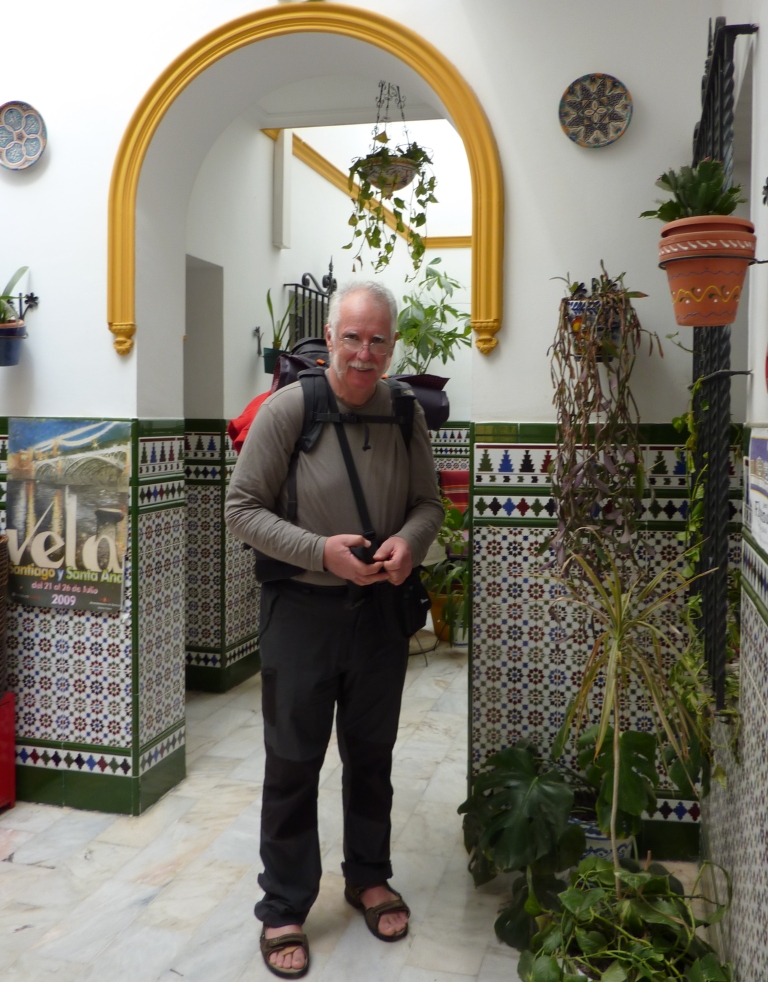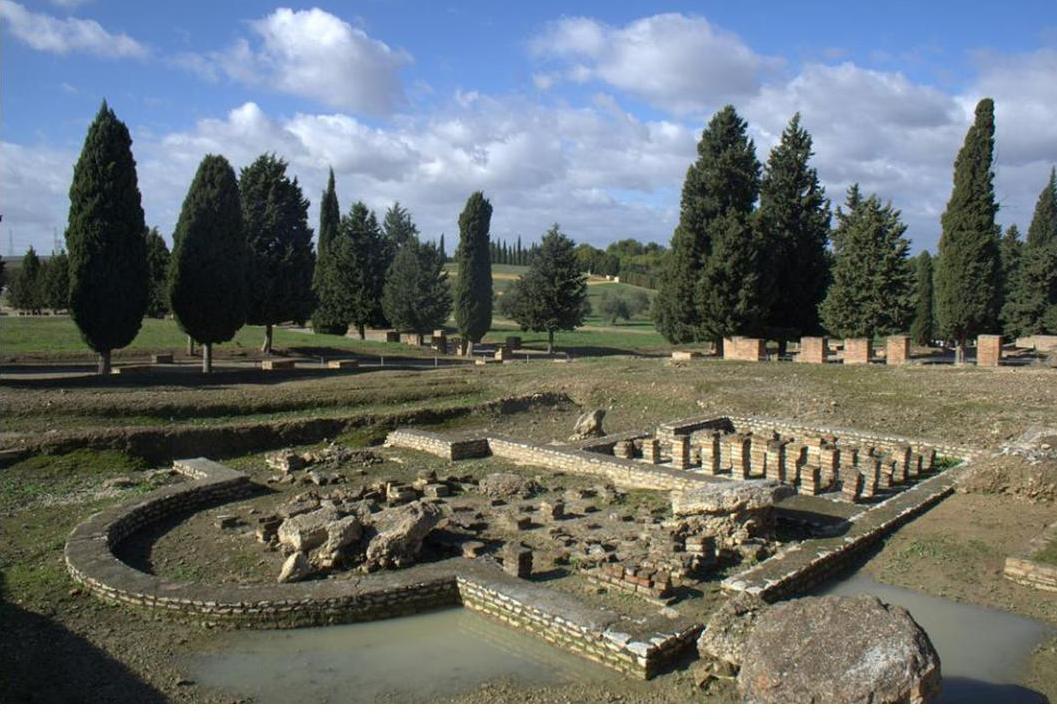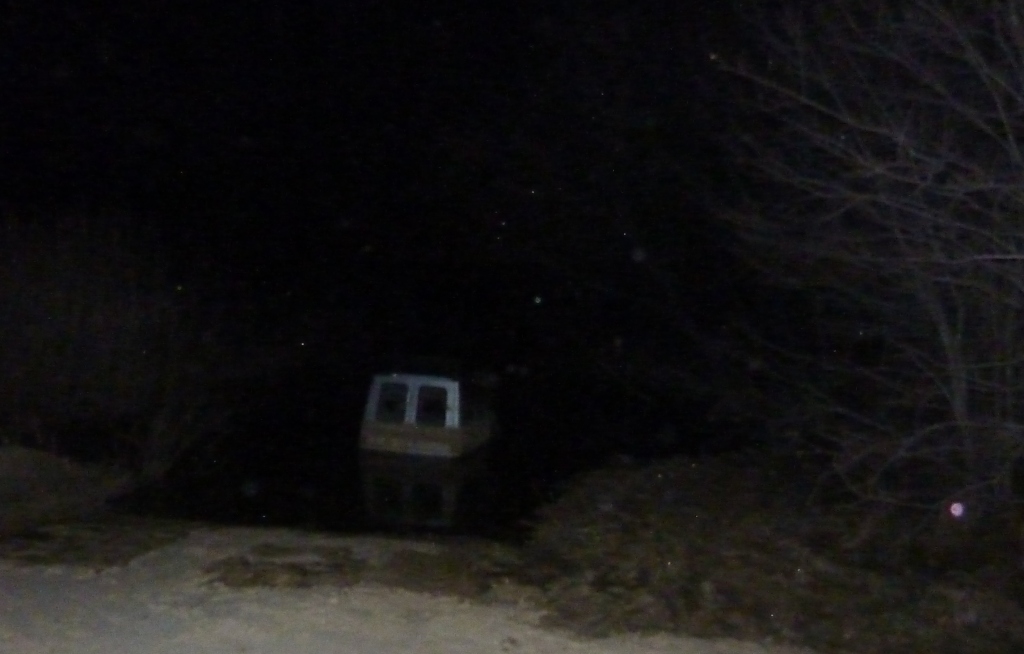On St. Patrick’s Day, 17th March 2010, I set out on my first Camino to Santiago by the Via de La Plata. I collected my Credentials, the essential document for the pilgrim, from the Backpacker’s Hostal in Tirana, Seville and started walking.
I walked out of Seville along the river, under motorways and over bridges surprised and buoyed by so many people saying “Buen Camino”. A lorry driver shouted it out of his cab at a roundabout and the Guardia Civil from their patrol car as well as a Gypsy woman hanging out her washing. Last year a young Danish boy said he was astonished how many people greeted him with this encouragement on the busy Camino Francés, wishing him well as if he were the only pilgrim they has seen in months. (From May to October over 700 a day can pass by on that route). The Spanish do seem to have remarkable way of looking straight at a stranger and inviting friendship.
[mapsmarker layer=”19″]
As I continued, I became used to being greeted by everyone I passed in the next 1000 kms so much so that it now feels strange to be in a city where people don’t say “hello” when they pass in the street. The Caminos traverse rural Spain. It may be the case that in all countries the rural life has less preoccupations than city life but I prefer to think that we all can have preoccupations which distract us from “seeing” others. Somehow in Spain the people do reach out with a smile, or a word of welcome which always seems fresh and genuine.
Seville is a great place to start a Camino, but don’t expect a night’s sleep if you stay in the Backpackers’ Hostal. It is as renown for its parties, as is Seville for its Fiestas.
After a few hours walking I reached the outskirts of the city and passed the Roman Ruins of Italica.
This was the first of many cultural sights I opted to by-pass although I enjoyed the thought that quite a few Roman Emperors, (Hadrian and Trajan among them) were born in Italica. Many Italians won’t believe you if you tell them this. So the Roman origins of the Via de La Plata, which is a route adorned with architectural gems from the days of the Roman Empire, present themselves to the pilgrim a few kilometres outside of Seville.
There is a long, straight path, well signed by the yellow arrows of the Camino which leads pilgrims into the lower part of the Sierra de Norte. It passes through fields which on this March evening were very damp. At nightfall I came to an arroyo: a stream which is seasonally substantial. There was a car stuck in it.
The river was deep and the bottom had a layer of mud which quickly swallowed my sandals. So, I lay down and slept my first night with my Camino impassable.



